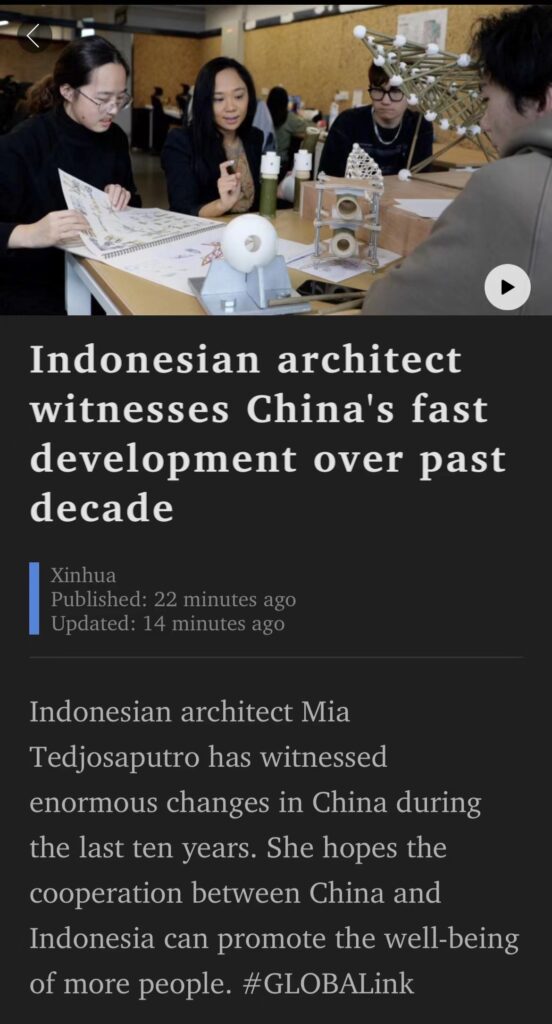
Link for the English version video: GLOBALink | Indonesian architect witnesses China’s fast development over past decade-Xinhua (news.cn)

Link for the English version video: GLOBALink | Indonesian architect witnesses China’s fast development over past decade-Xinhua (news.cn)
Hi all, click the pdf below (19MB) to view our first list:
Check this live document to check availability: https://docs.qq.com/sheet/DVWVvS1p5SGFOTW5v
Our second list:
The live document to check availability: https://docs.qq.com/sheet/DVXZxcHNLc2Z6bHR0
I sat down with Stacey, we had a talk about my passion and general interests in design and architecture. Thank you for having me, Ningbo Focus. If you would like to read the article, here is the pdf: Mia Ningbo Focus March 2022. If you are keen to read the whole March 2022 bilingual magazine, click here for the e-magazine.
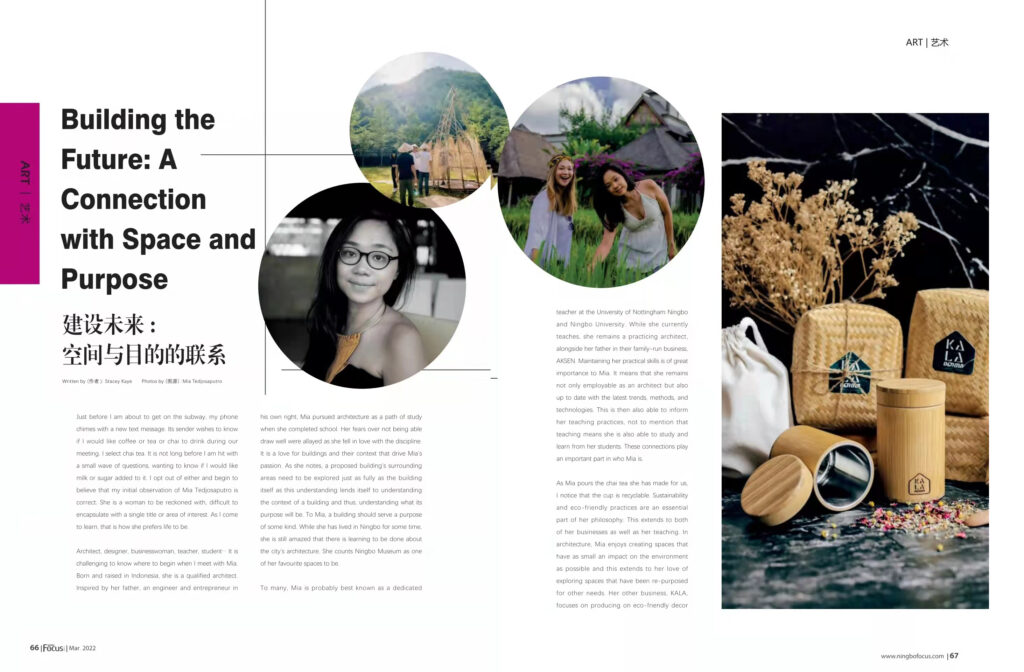
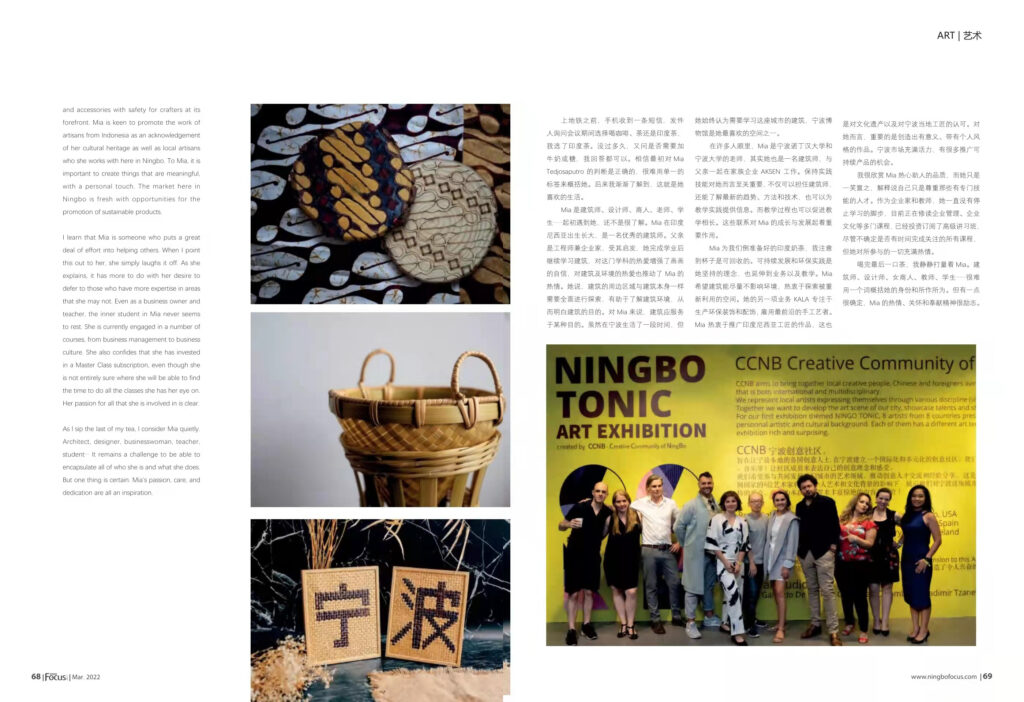
For AR experience, open this in your browser (not on WeChat though):
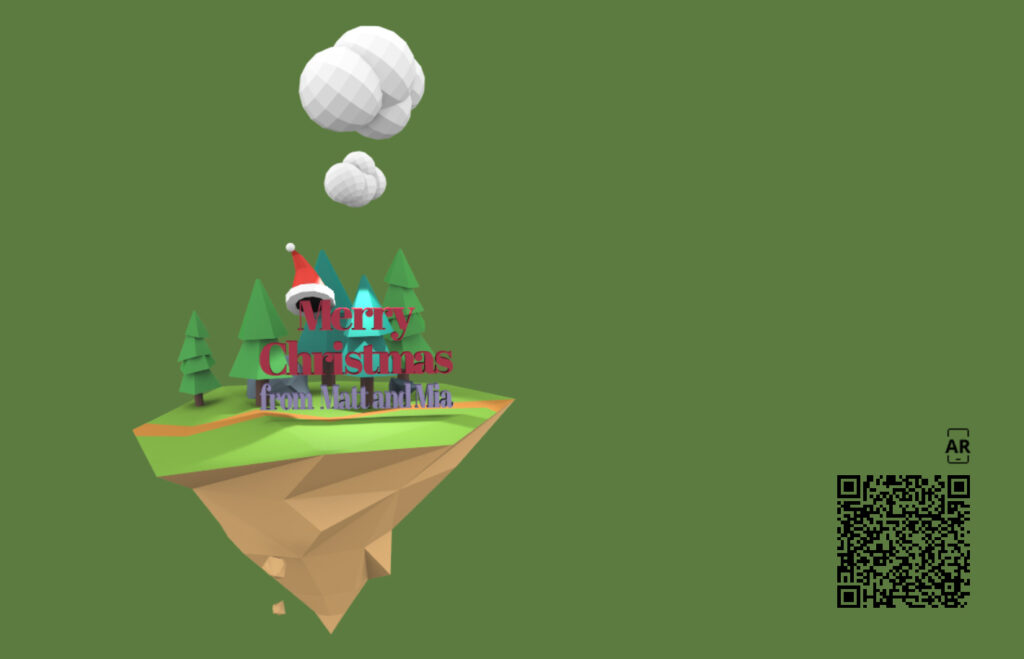
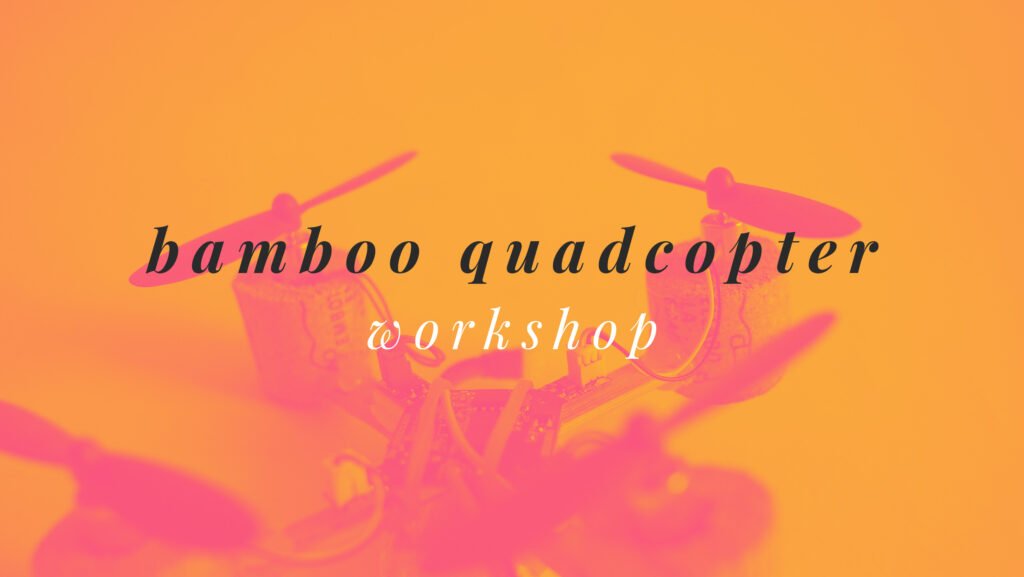
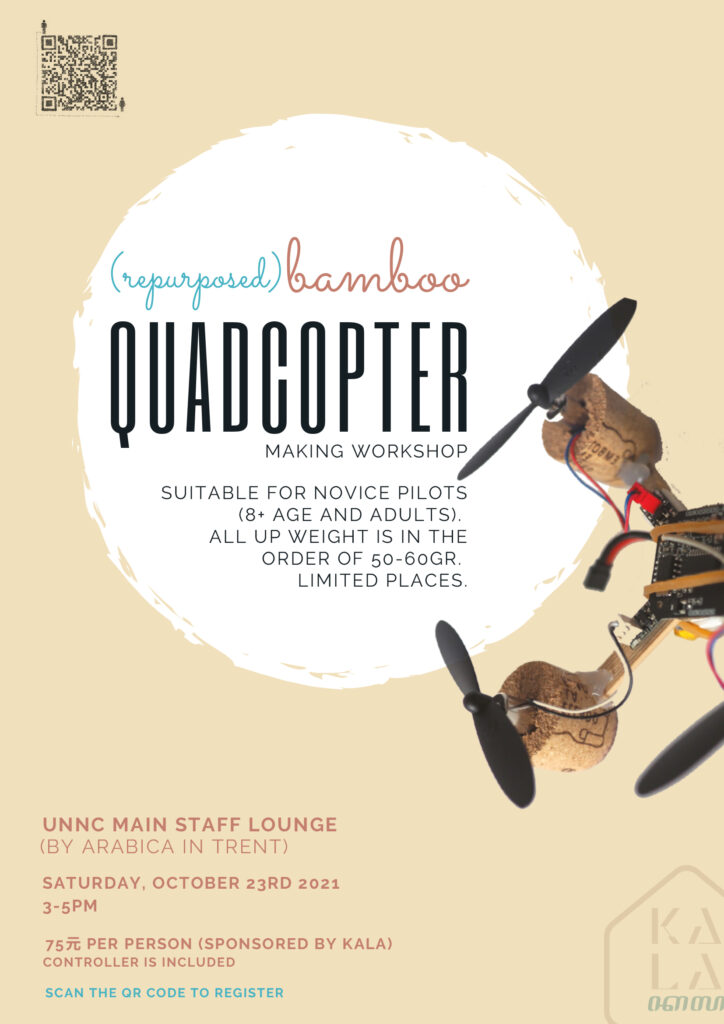
Thank you for joining us! I hope you all had fun. We started the workshop with a lecture by Matt Wallwork, then we got making straightaway and fly the quads. The bamboo frames was repurposed from Bamboo Pod 3 construction. Also we use repurposed corks. Jolly fun!
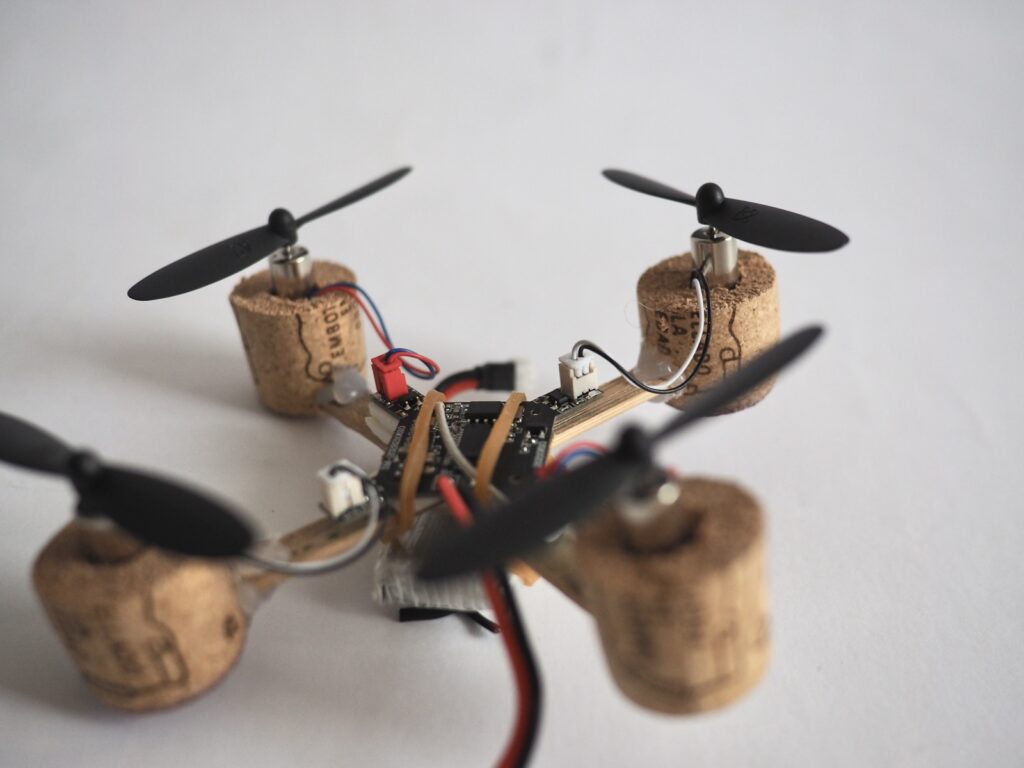
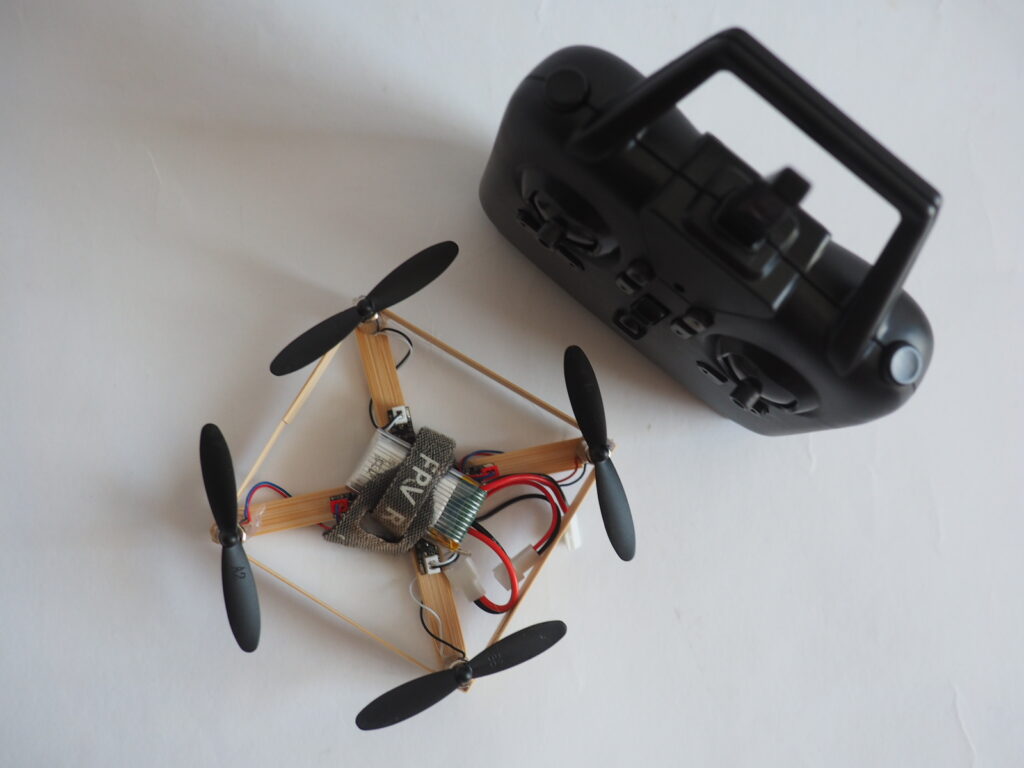
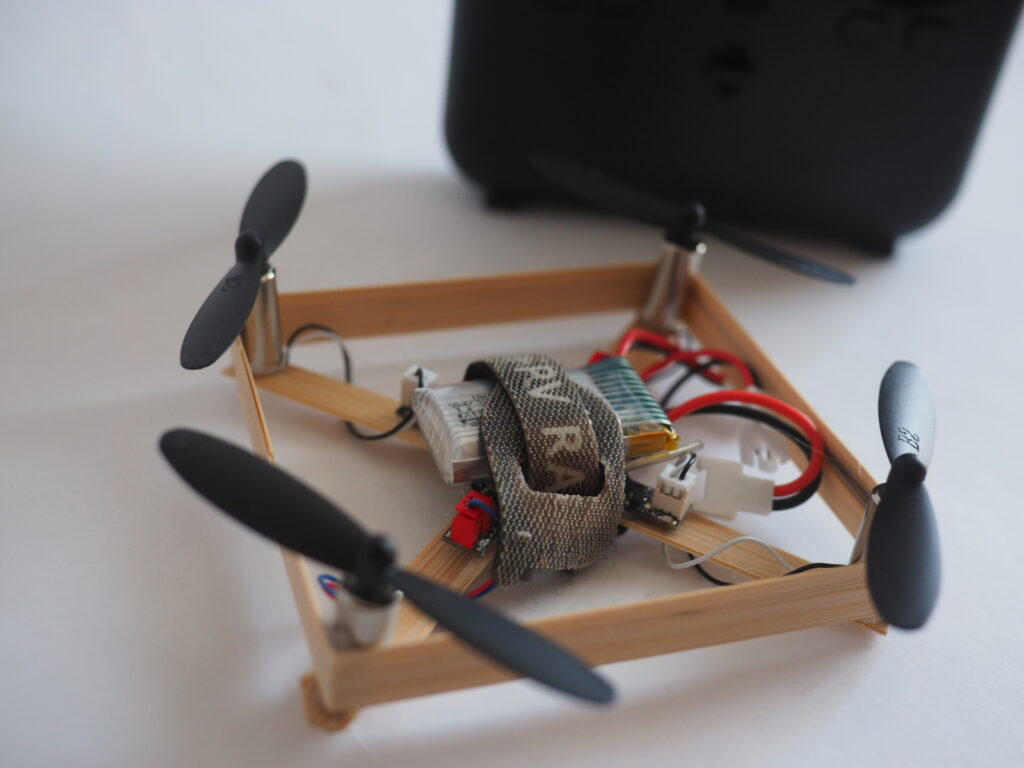












I made a quick 2 minutes video (taken by my phone, handheld without a gimbal) about the village and the design library:
Day 1: Bamboo Pod 3 Prototype build at Mr Box, Ningbo.
29 June 2021
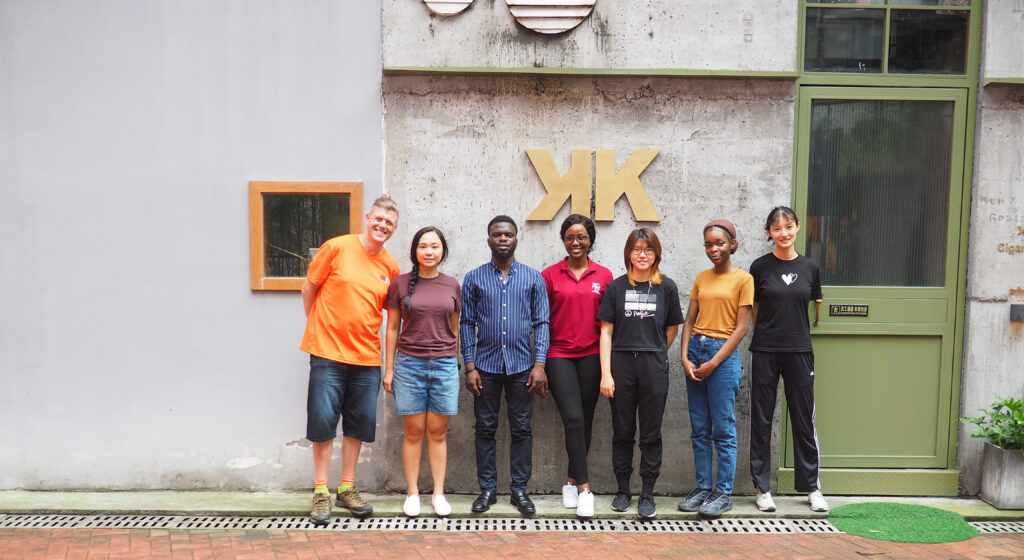
The day started with the participants arriving from various parts of the city to participate in this extracurricular, unofficial project. Nancy and Joy- two preliminary year architecture students from the University of Nottingham- travelled with Matt (Academic English teacher at University of Nottingham Ningbo China) and Mia (part time lecturer in both universities, Ningbo University and Nottingham) and we met up with Francy, Patricia, and Romance (Ningbo University architecture students, in year 4) at Xin Yi Yuan tea house. The first order of business was to collect the bamboo from the new camping shop at Black Box café, who had kindly stored it since it was delivered early that morning.
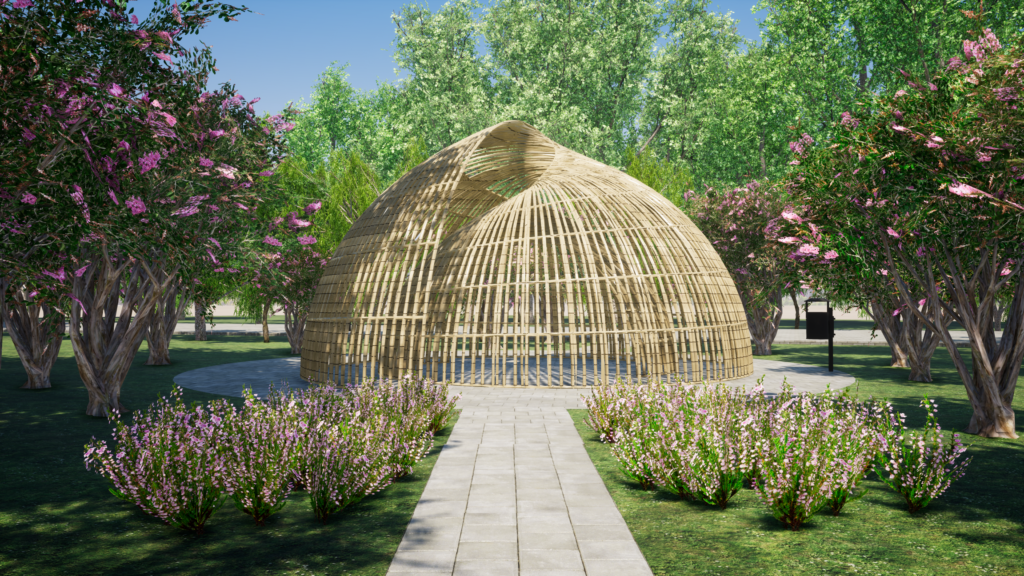
The bamboo pod design was part of Digital Architecture 2021 module in Ningbo University for Year 4 architecture students, it is developed and facilitated by Dr. Mia Tedjosaputro. The parametric design was generated by Group 1 as part of their Assignment 1 group submission, using Rhino 3D and Grasshopper. The team members are: Romance, Patricia and Houda. Due to the fact that most architecture students from NBU are still abroad due to the pandemic, only a handful number of students are in Ningbo and some of them joined this workshop.
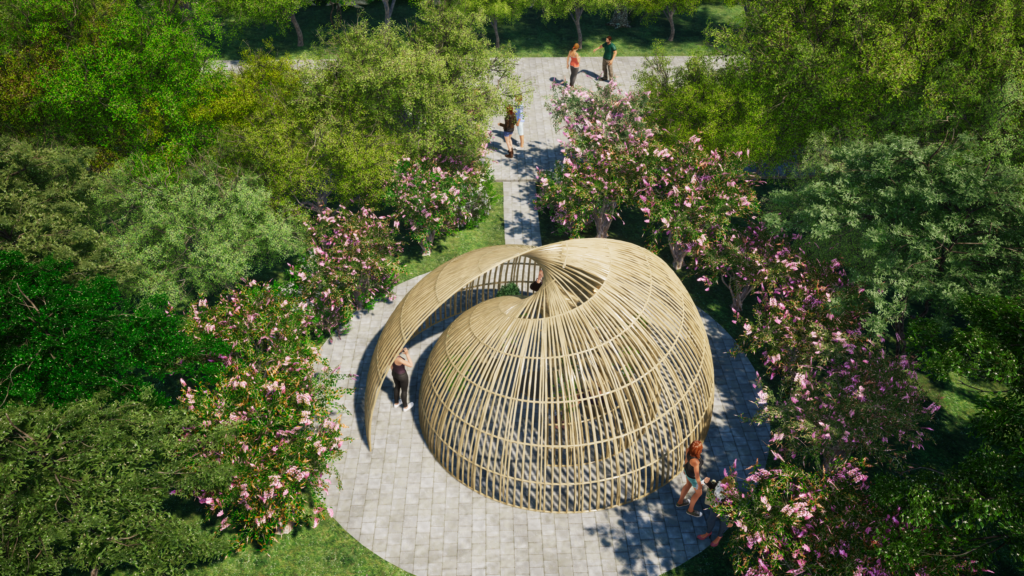
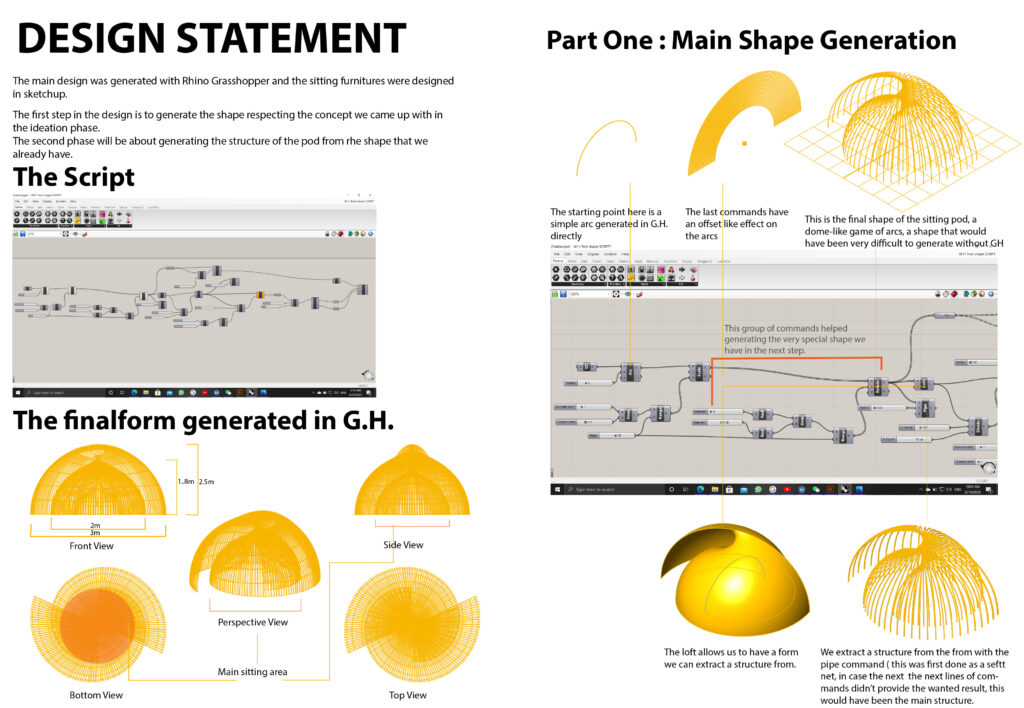
After brief introductions, including the café’s resident friendly cat, the 1:25 scale model making began. The students were spilt into two groups with a nice mix of Ningbo Uni and Nottingham students, so there was great collaboration between the two universities from the outset.
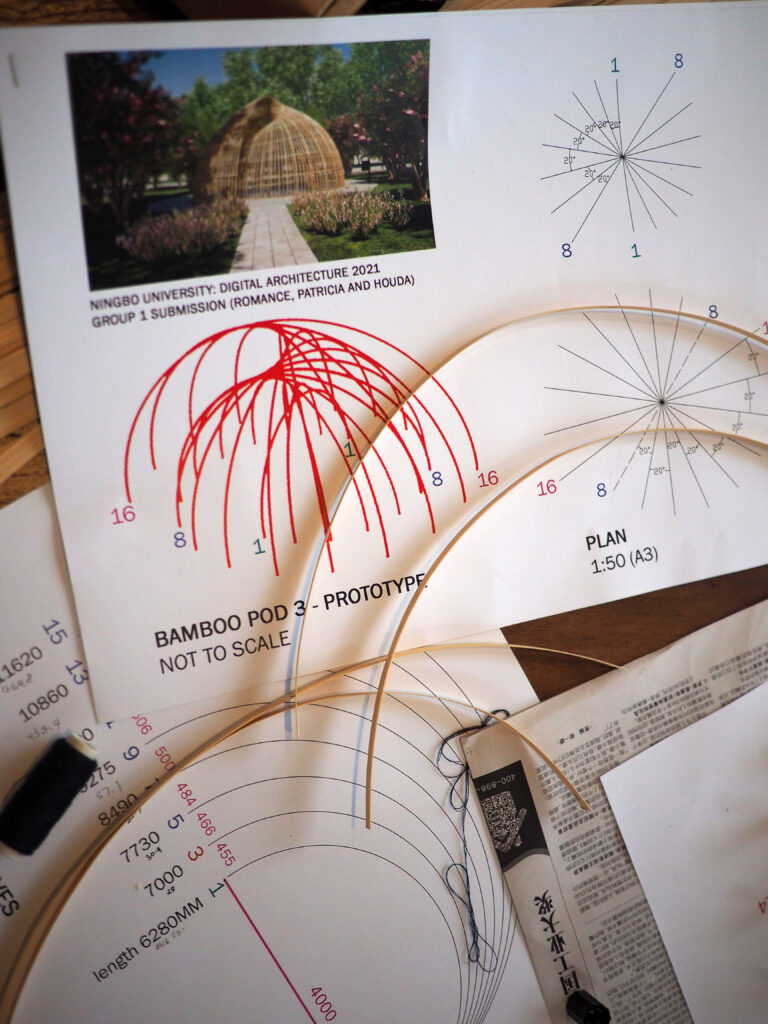
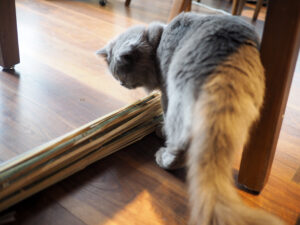
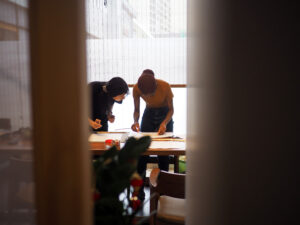
The students worked well to overcome the minor problems that inevitably appear during any construction project and overall this was a very valuable learning experience. This whole exercise is a prelude to a full-scale build of the structure in September. We only explore the main structural system which comprises of 16 hoops, testing out before we build the full scale of bamboo structure.
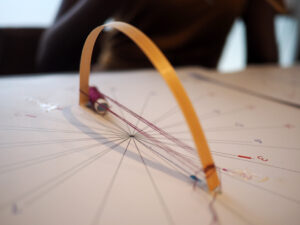
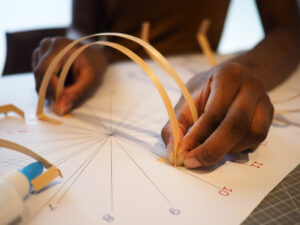
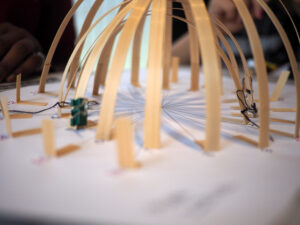
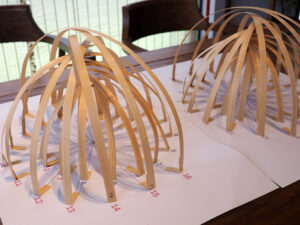
After lunch we started to build the 1:2 scale prototype. We had to deal with what appear to be a quite disastrous material sourcing. The 60 pieces of bamboo battens we requested was 50mm, and what came was 5mm wide. Structural system is affected, but we have to adapt and improvise. Quite a number of tools and materials are no longer necessary as they were prepared for the correct width.
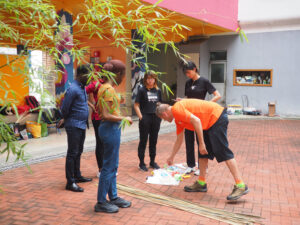
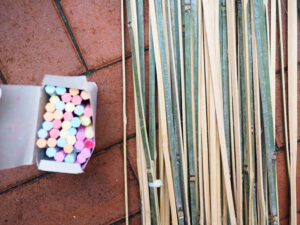
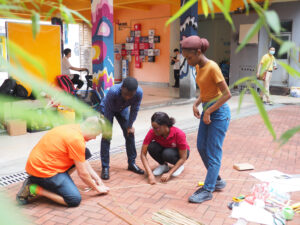
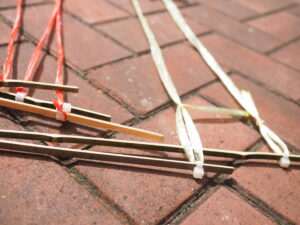
Mr Box was incredibly accommodating for this project. Ningbo city itself is a great hive of creativity, and academic and artistic projects are really encouraged here. It is truly gratifying to be able to arrange a space for a project of this scale so easily, and to be so well supported throughout the whole project. It is immeasurably valuable for students to be able to have this kind of hands-on building experience, and for artists to have space to express themselves in a space where they will get public exposure, so the general public of Ningbo can also benefit. Here are a glimpse of Mr Box area:
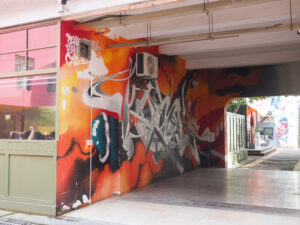
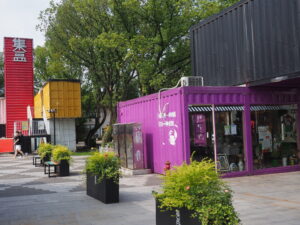
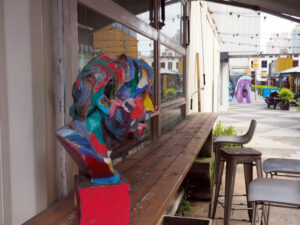
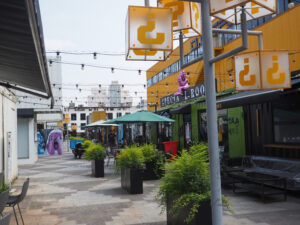
Our heartfelt gratitude goes out to Mr Box, and to the Black Box café and Xin Yi Xuan tea house for being so flexible and making this whole rich experience possible. It was particularly valued by the Ningbo University students, as morale is a bit low at the moment- many of their cohort are in their home countries, unable to return to China due to Covid restrictions, and those who are here- the ones who have called Ningbo their home for the past four years- are few in number and studying online. This hands-on, face to face, practical extracurricular project was especially precious to them, so again- many thanks to Mr Box for facilitating this!
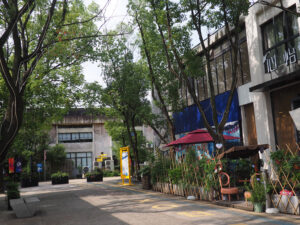
On another note, we had a couple of major catastrophes with materials, which goes a long way towards our future planning. Quite an intriguing exercise on prototyping stage, as there is no pressure to get the pod 100% up and perfect. Mistakes are expected, shall we say. Especially with a more manageable scale, 1:2. Day 2 tomorrow, bring it on!
Our keen makers: Romance, Patricia, Francy, Serena, Nancy (Jianan Wang) and Joy (Qiaoyi Zeng)
Facilitators: Dr. Mia Tedjosaputro and Matt Wallwork
Thank you also goes to Neal (Fan Zeran), Wang Yin, Chenchu and Mr Box for making it possible.
A two days in between my marking exercise, painting with the jumping Parrot. The RC toy has been on the shelf for months and I envisaged him be my main actor of experimental paintings. First I had to attach a brush somehow. Velcro? Tie a brush perhaps? The first trial I re-used bread ties, but the brush flopped left and right (which created interesting effects) but soon realised this was not a long-term system.
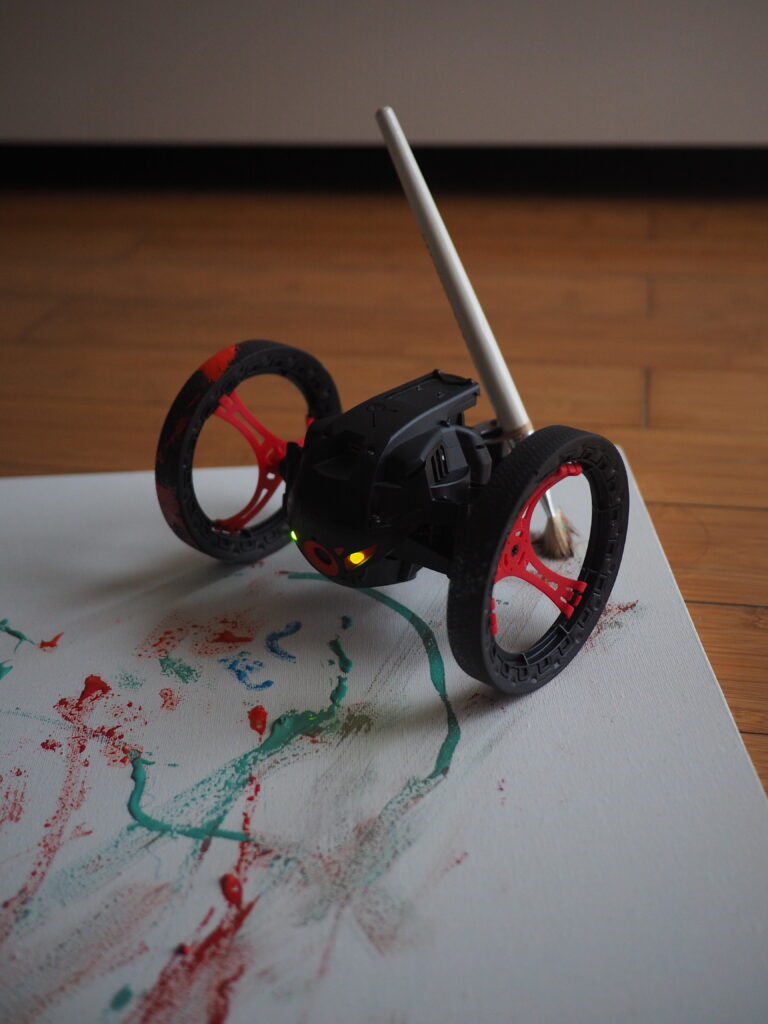
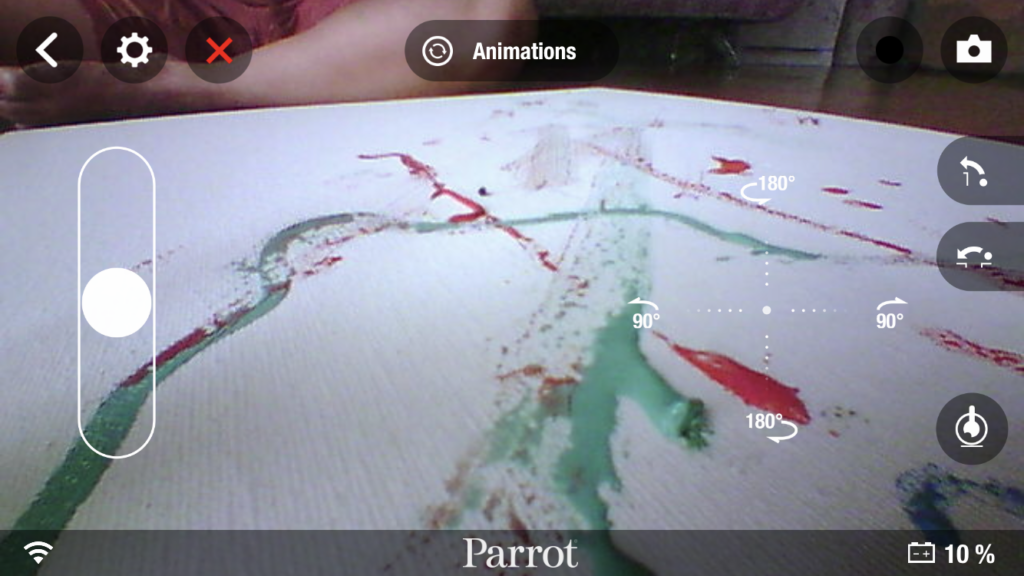
YouTube link for the above video: https://youtu.be/1qkwDJhg2D4
Subsequently my handy husband came with a couple of different ideas (as he always does). The second trial he cobbled and re-used GoPro mounts we have an abundance of. It was too far back and too heavy, the moment of inertia was too great. We also looked at the possibility to add a toothbrush on Parrot’s ‘belly’ but was quickly discarded.
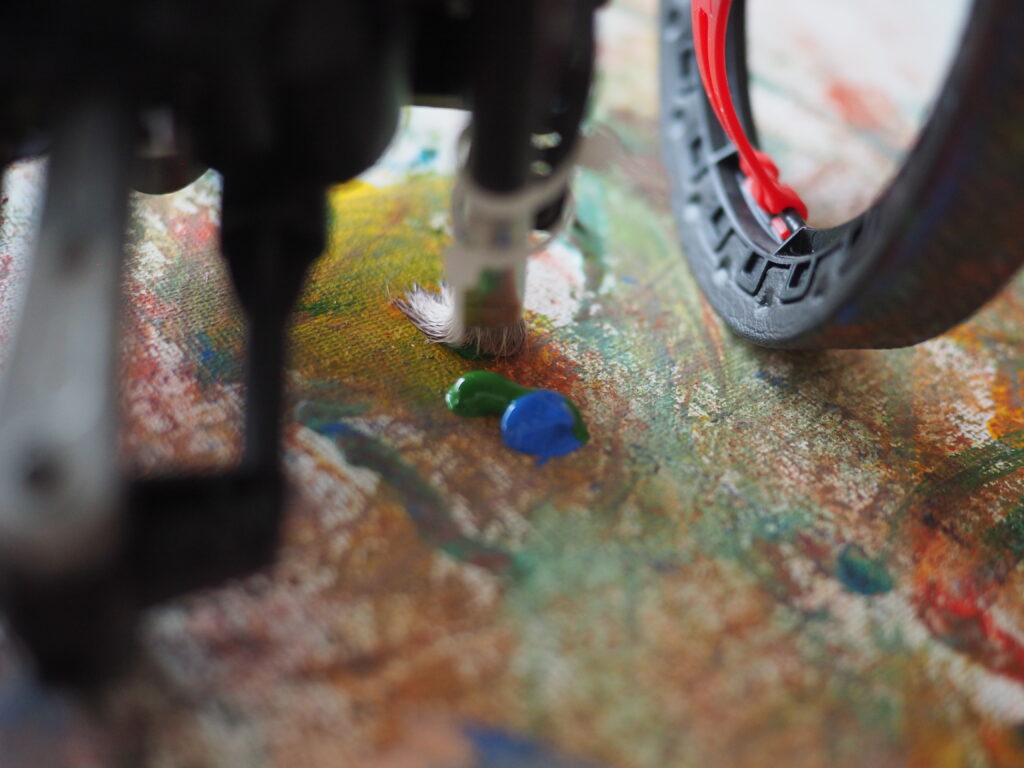
YouTube link for the above video: https://youtu.be/J9x9oo4CYuA
With the third system we placed the brush closer to the axis of rotation, and it mitigated the mentioned problem. Now the Parrot can do some pre-defined horizontal modes, but due to the canvas size, jumping is limited. I’ll get a bigger canvas (better still, a roll of canvas) and play with his jumping mode. Here is the final look of the scribble:

This is the final look and it encapsulates different movements Parrot made which I can demystify each one of them. Patterns were also generated from the predefined moves (‘metronome’, ‘slow shake’, ‘slalom’, etc). The strokes were generated not by the brush only, but also the wheels (they get really colourful) as well. It was a great exercise on working with limitations (the RC toy itself, the canvas size and brush size) and expecting the uncertainty with its playfulness.
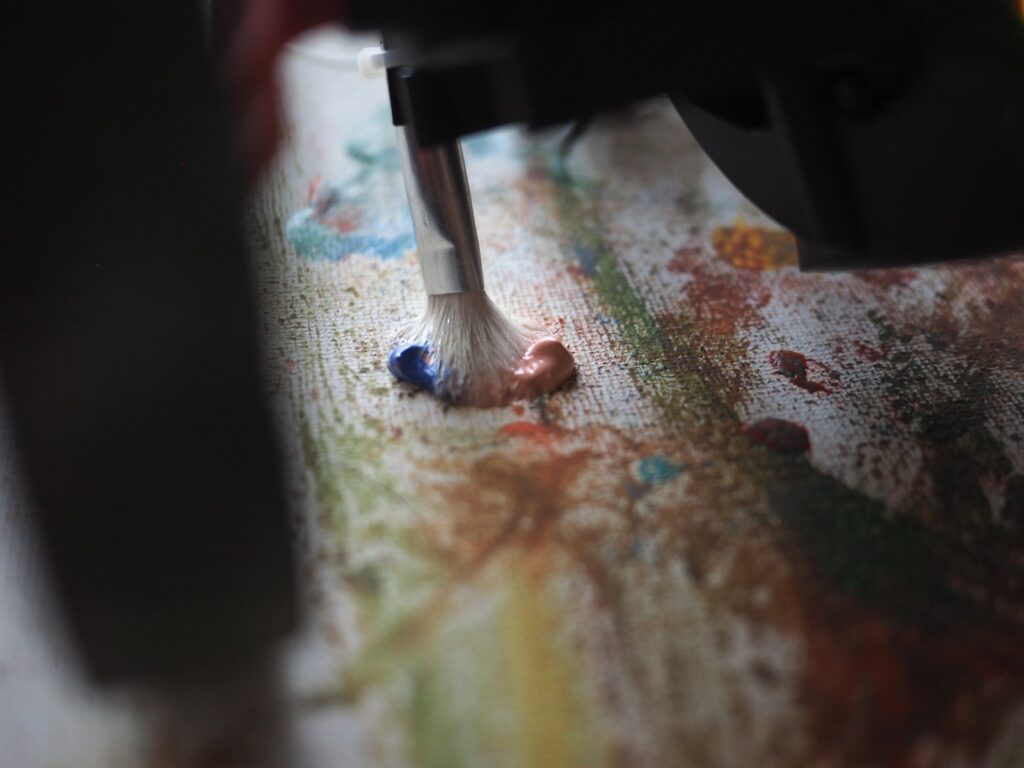
The future fun exercises will involve getting a bigger canvas exploring effects which the Parrot can do when he jumps. Also different methods on dabbing the paint- on the brush, on canvas, on the wheels, or combination of them.
S24O (bike and camp) mini adventure!
Matt and I are blessed to be living not far from the great outdoors of Ningbo. When regular couples will book the most romantic dinner in favourite places on Valentine’s Day, we wanted to avoid the crowd. We indulge ourselves by going camping quite often in different seasons- in particular, to places which can be reached by bikes. So here is the time when we left our expensive road bikes at home and took the touring bikes instead.
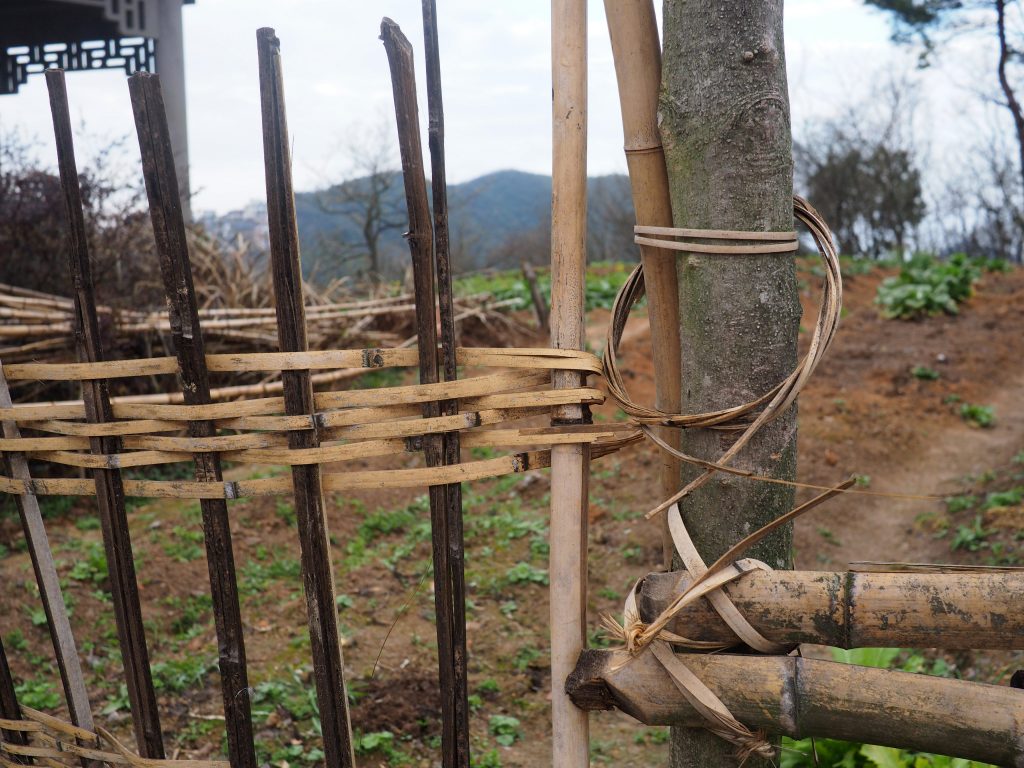
Biking and camping are not a novel outdoorsy combination. This article illustrates how taking inspiration from nature has a great impact on how the KALA brand is shaped and is being developed. My great interest in natural materials as KALA’s design direction was a result of this too. The trip itself did not cost much as we cycled all the way there and carried our own gear and water.
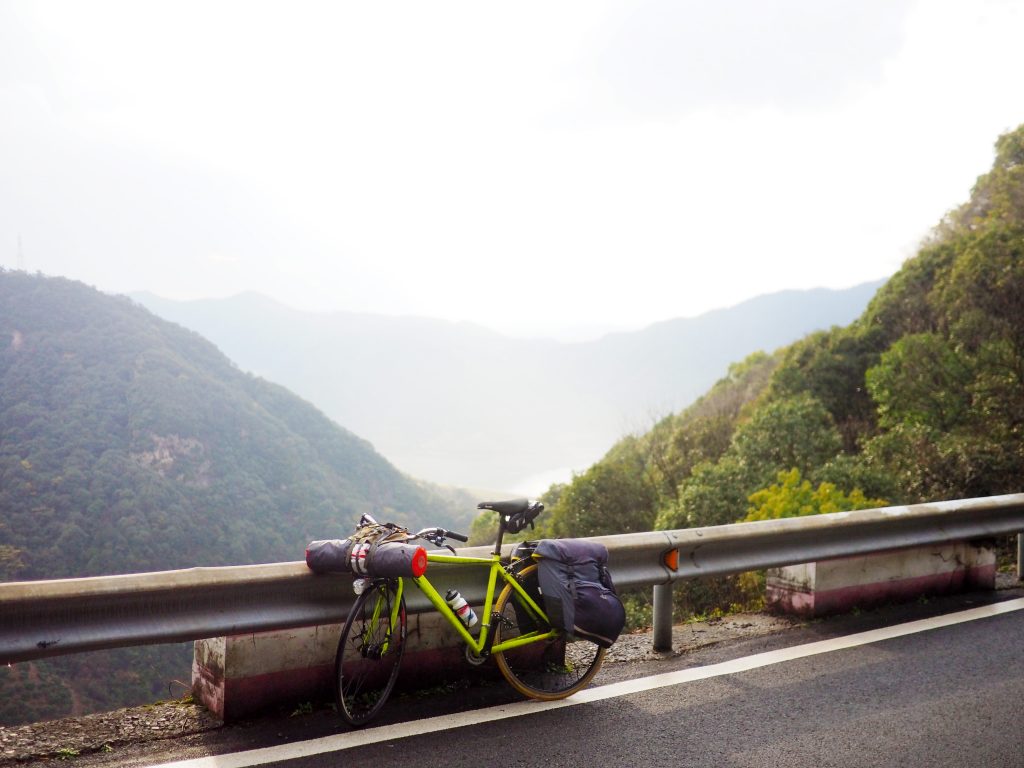
Both Matt and I are not natural living zealots (nowhere near- we still carry plastic wrappers during our camping trips, for instance the crisps or baguette bag) but we also try to take small steps to reduce our less ideal consumption behaviour.
So we set off on Valentine’s Day (which was also our wedding anniversary) with two bikes. Matt carried most of the gear as usual (sleeping system and cooking gear) and I carried the tent and my camera in a special camera bag for bikes. The journey itself it was quite short, a mere 21km away with a 430+ metre climb. It turned to be a beautiful afternoon once we were done getting rained on. D’oh!
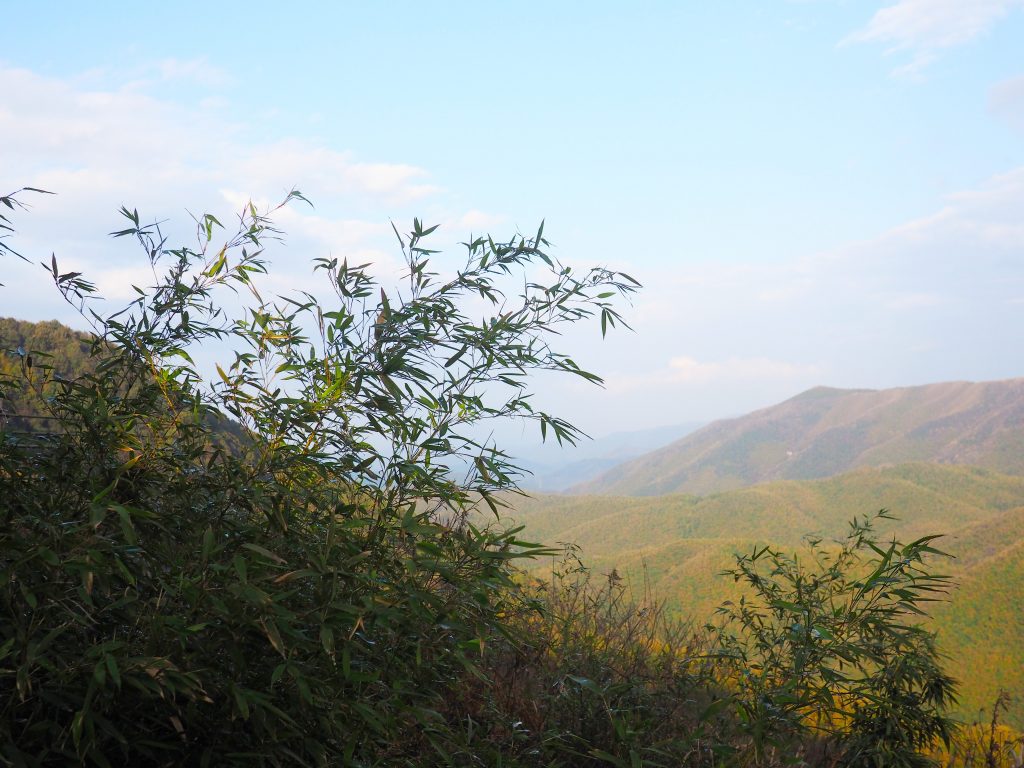
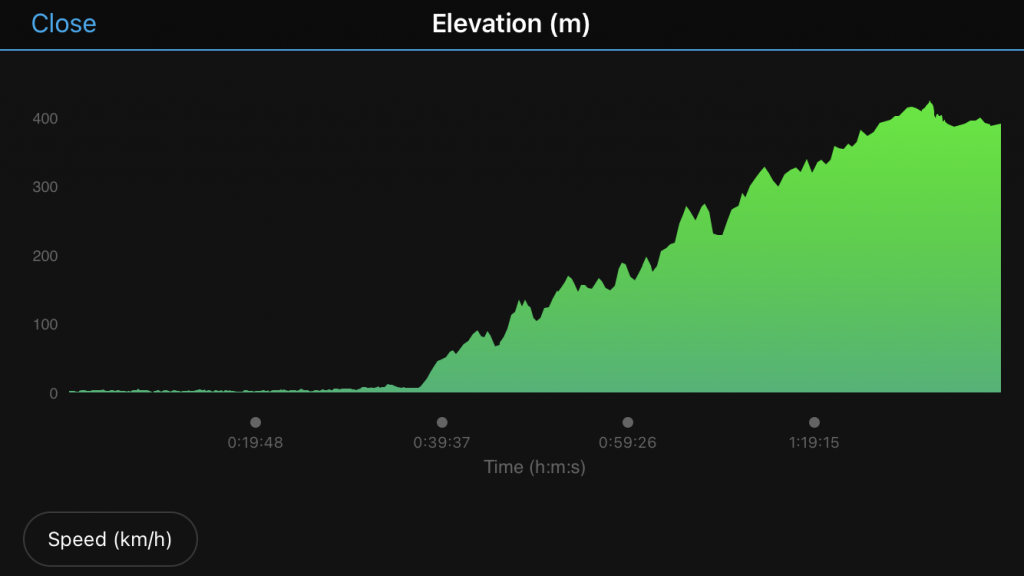
We got to the campsite at 5pm, just enough time to set the tent up before it got dark. There is no road light (nor any light) around the campsite. We found the site a few years back, during one of those adventurous and ‘see where this road takes us to’ kind of moments, but it didn’t link to any other roads.
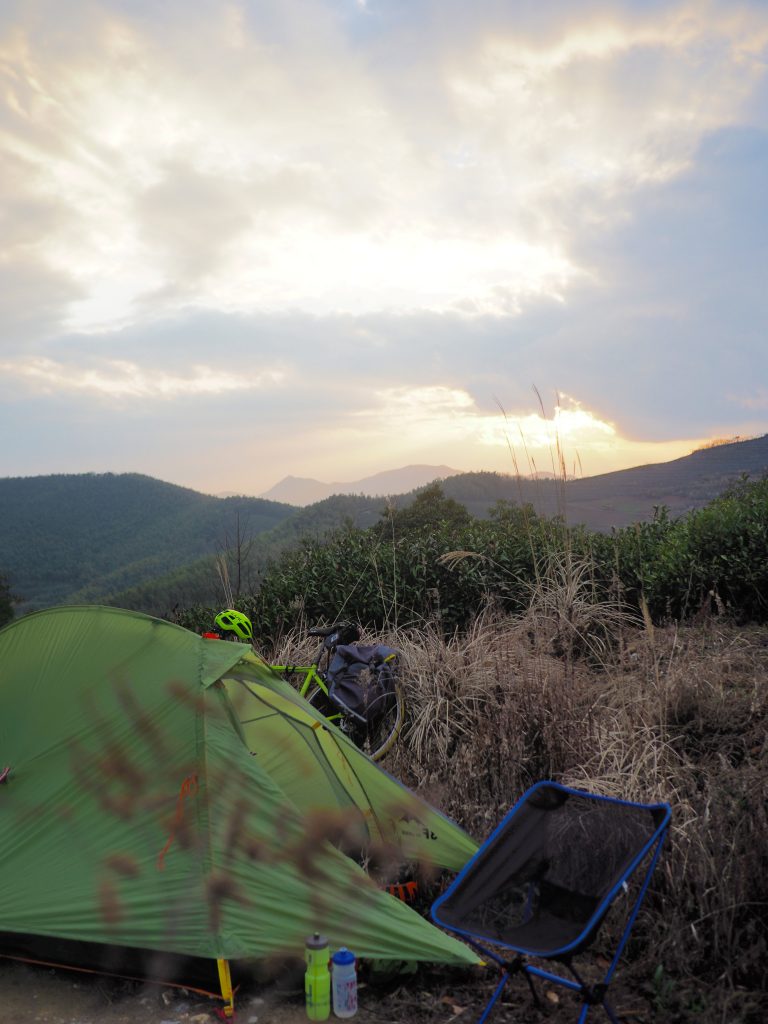
KALA’s own insulated cup made for good company, it keeps our hot beverage (necessary when it got cooler once the sun set) warmer for longer. Tip: You can find this product in KALA’s Weidian online shop.
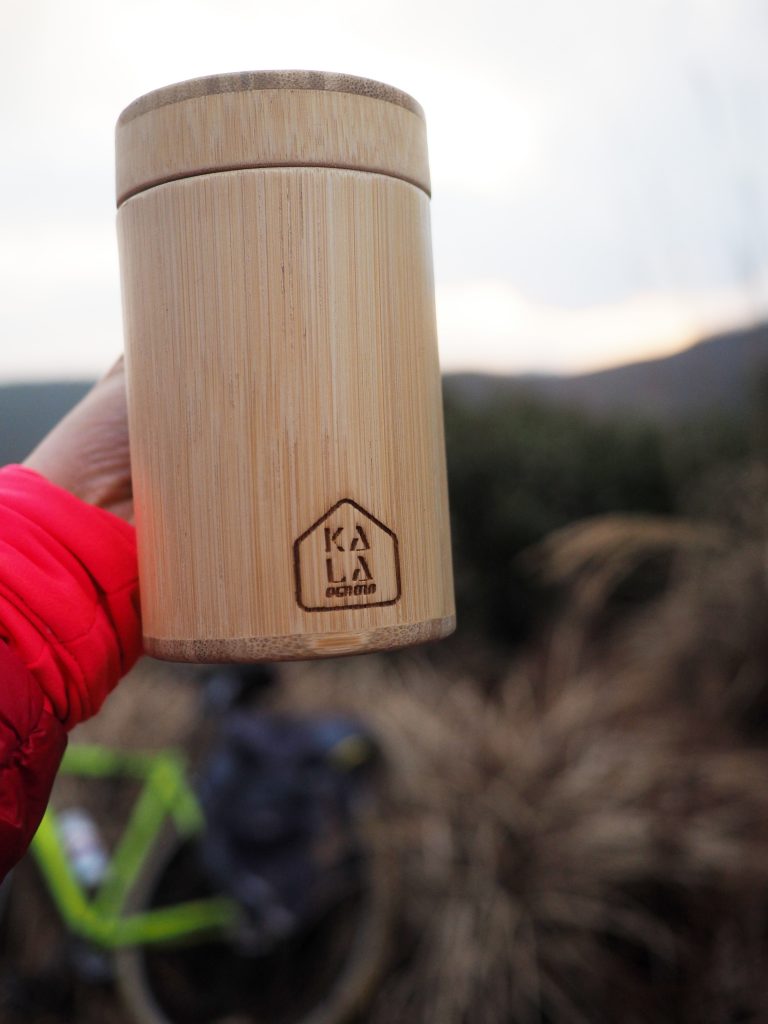
Like most camping people, we like the idea of camp cooking. We did not have the luxury of a campfire however. To save taking a small chopping board and the whole onion on the bikes, I pre-chopped one and put it in the re-usable beeswax wrapper. It was one of KALA’s products too (will be back with the coolest batik patterns KALA designed). I reused a bread tie I have been collecting every time we buy bread. Completely zero waste, I get to wash the wrapper and re-use the bread tie again. Valentine’s day’s main menu was beef with creamy corn soup, with a baguette to share for dipping. Just humble comfort food.
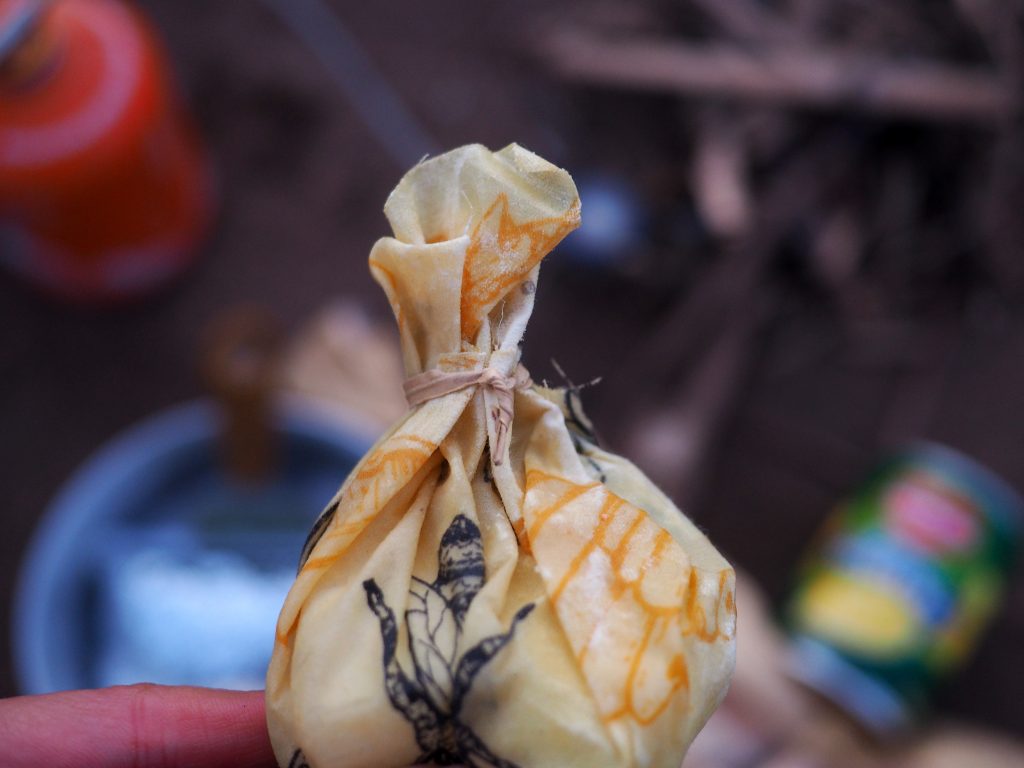
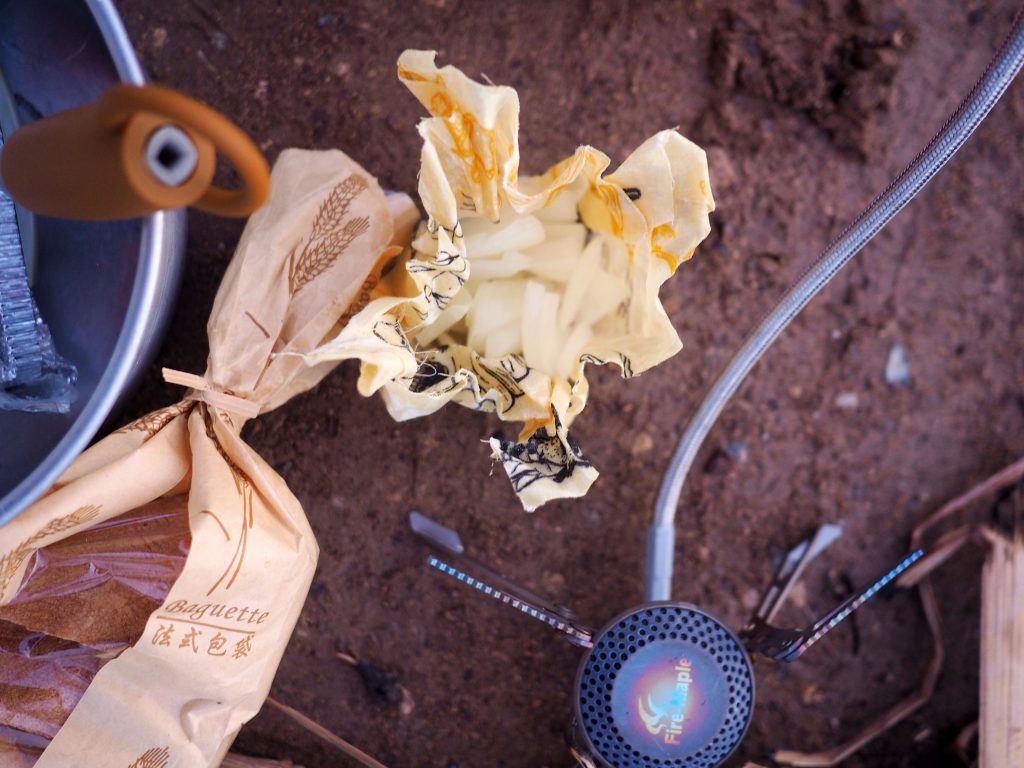
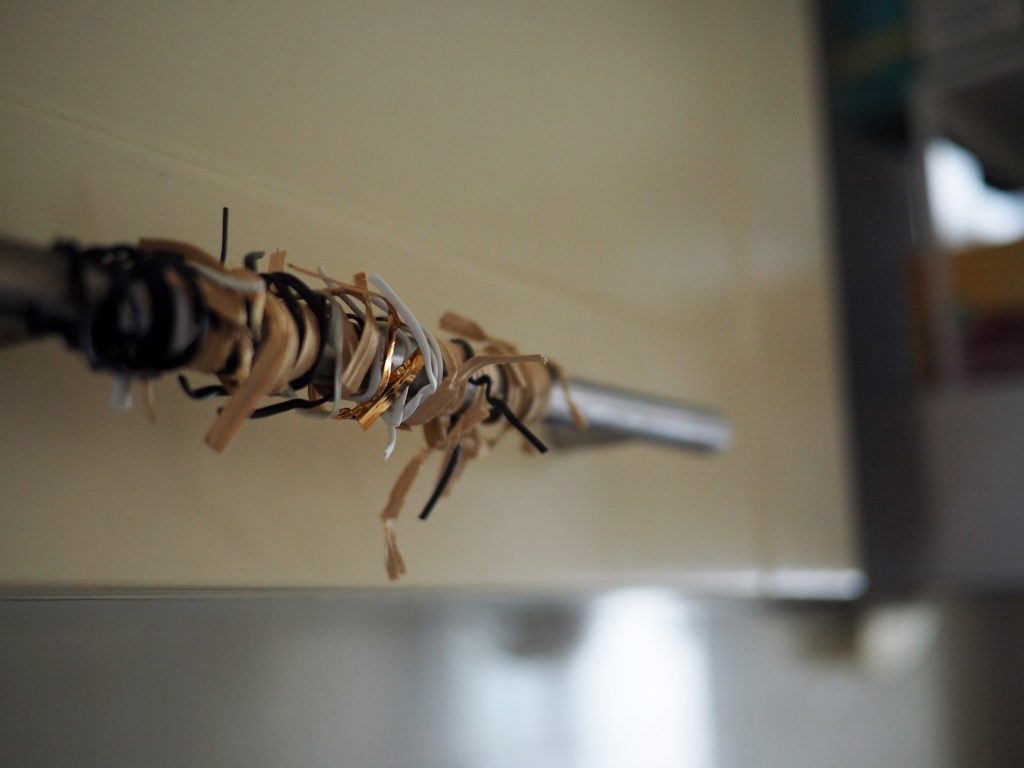
The sky was so clear that night and we got to see stars. We retired early (8pm) after sharing a bottle of wine we picked up in the nearest town (Hengxi) and the night was windier than we thought.
Mornings at the campsite are the ones to look forward to. Although the view was not as spectacular as the day before (a bit foggy), the tea plantations and the mountains still looked as majestic as they always are.
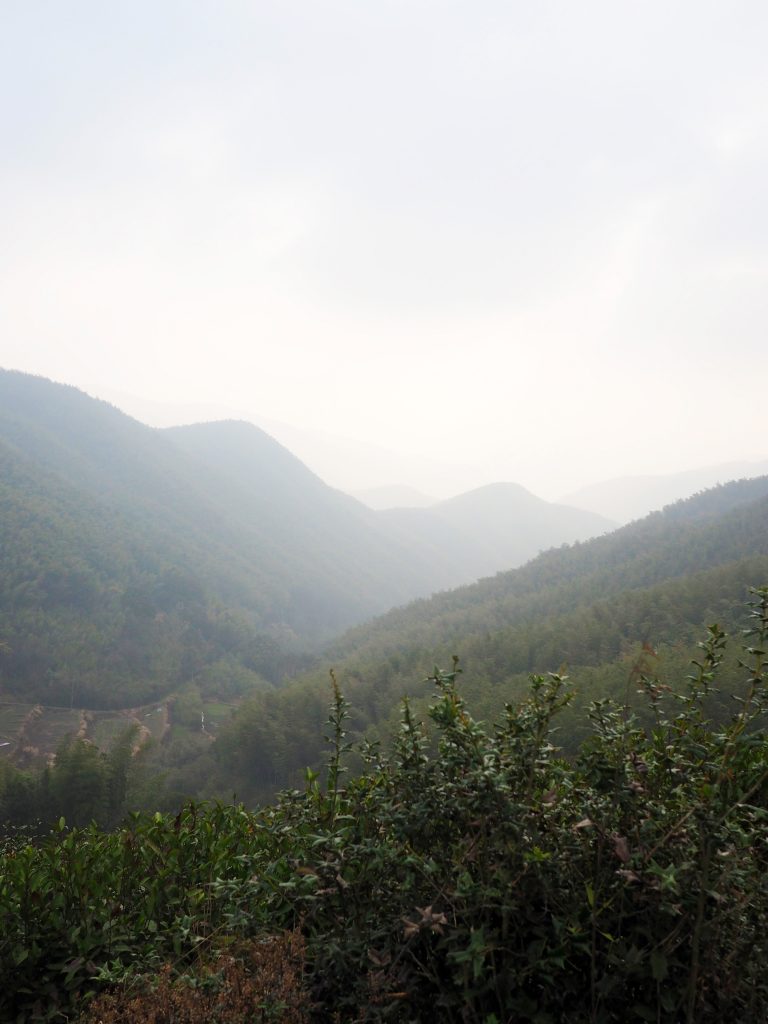
KALA’s bamboo drip coffee filter was in service, brewing a slow coffee. We did not take the stand for convenience, but the insulated cup was a good size (tall enough) making sure the filter is not merged in the coffee (which can result in clogging). Because the bamboo filter is light, it was perfect for this kind of mission.
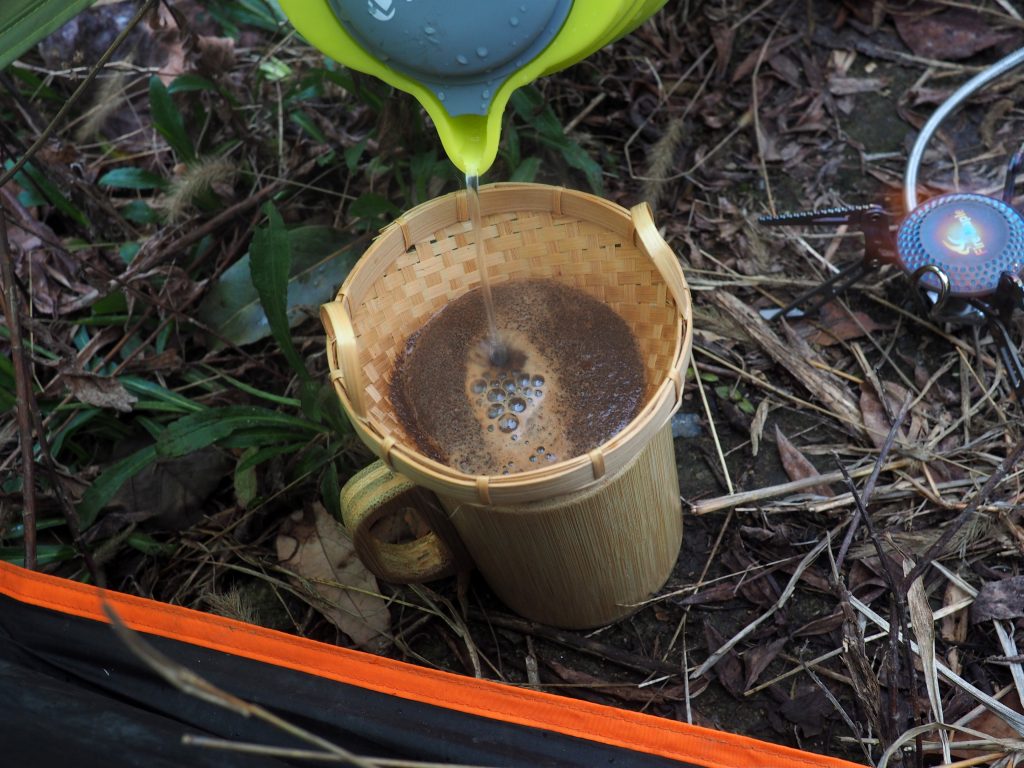
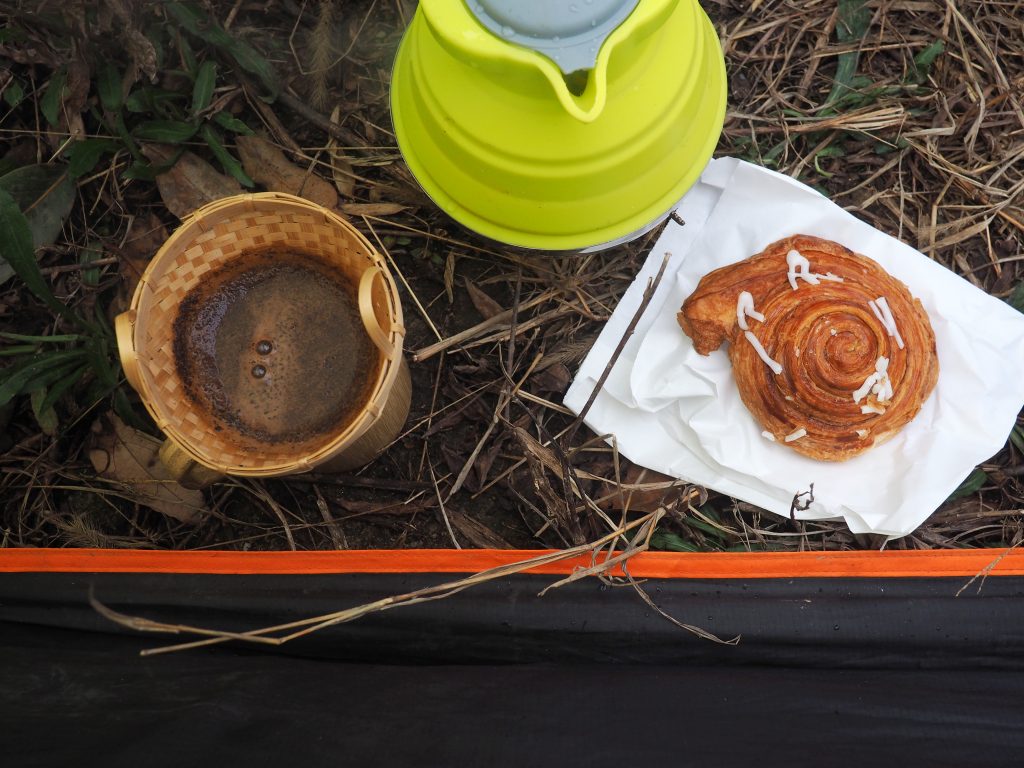
I hope this short journey gives you inspiration for local adventures which are eco-friendlier, fun and memorable.
Products used on this trip which you can purchase from us are:
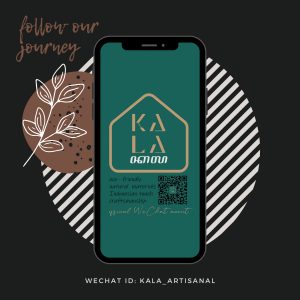
You can also view this article in our official WeChat account:
For English : https://mp.weixin.qq.com/s/lueQxP31YUefeWGmU_eLaw
For Chinese : https://mp.weixin.qq.com/s/n_EHnlE4Y-Uj6DeZeCU2Gg
ABOUT KALA
KALA was founded by Mia and Elza Tedjosaputro, in May 2020. KALA provides high quality stylish home decor and accessories that highlight a few simple attainable changes towards an eco-friendly lifestyle. There is always an Indonesian touch ensuring we empower our craftsmen and promote Indonesian culture and craftsmanship. KALA’s specific design language is the use of natural materials and artisanal, with a sense of play of texture and product functionality. We are based in Indonesia and China.

Bamboo kayak: from firewood to floating!
LOCATION
Danshan Chishui, Siming Mountains, Ningbo China
ABOUT THE PROJECT
This isn’t a step- by- step guide to building a bamboo kayak, as if anyone wants to build one, you can basically make it up as you go along- that’s what we did!
We had a couple of temporary bamboo structures to dismantle (click here for Bamboo Pod #1 and Bamboo Pod #2 coverage), which had been a design and build exercise for students. This left us with a lot of weathered bamboo to play with, so we decided to make a kayak.
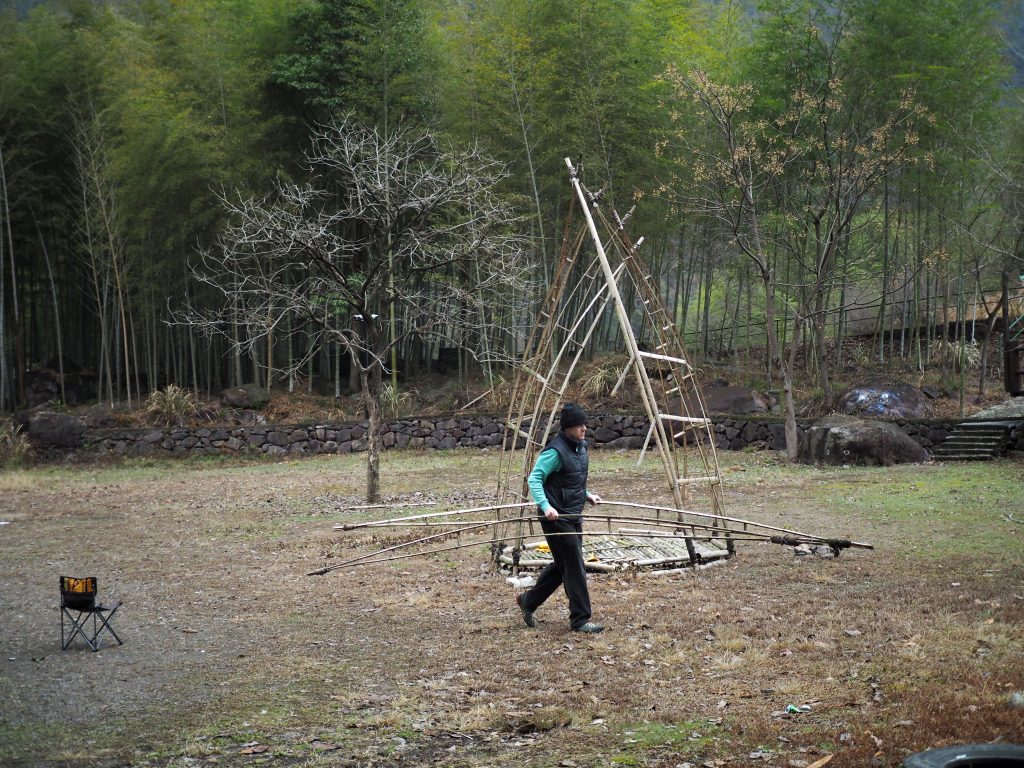
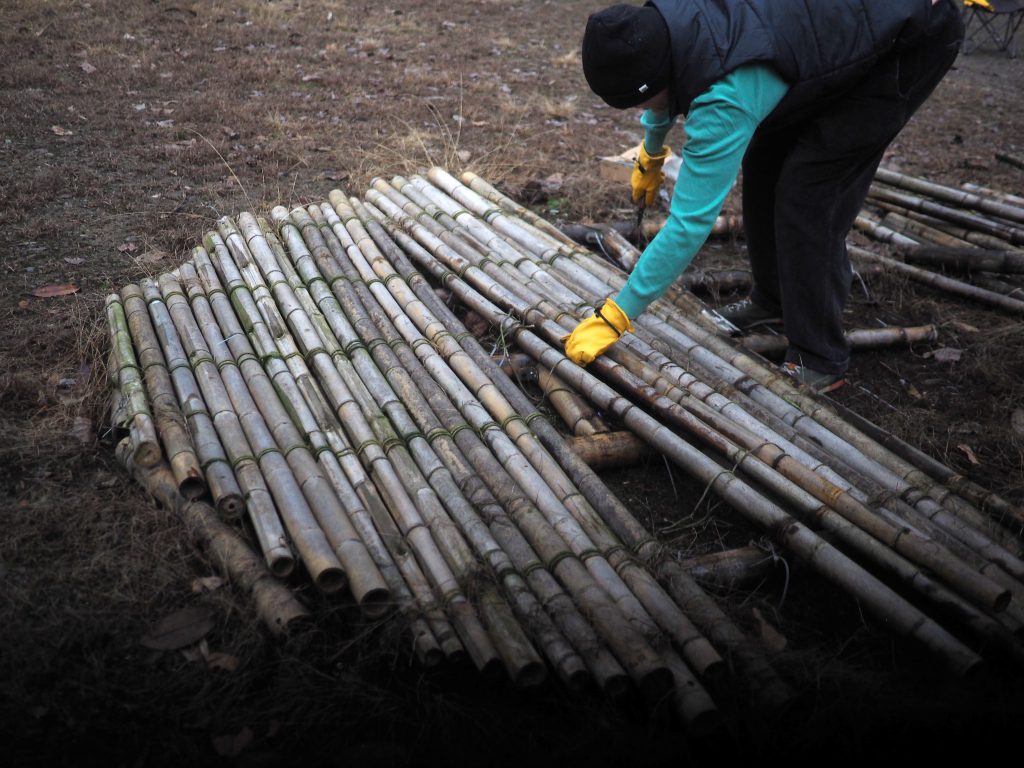
Video: cleaning dismantled materials
When bamboo has been exposed to nearly a year of rain, snow, sun and wind, it becomes very hard but quite brittle. For the curves we needed for the kayak however, it was fine. There are numerous ways of making the joints- peg and dowel, hemp/ plant-based epoxy lugs, etc. but time was a factor for us and this was only a prototype, so we used plastic zip ties, insulation tape and steel fencing wire.
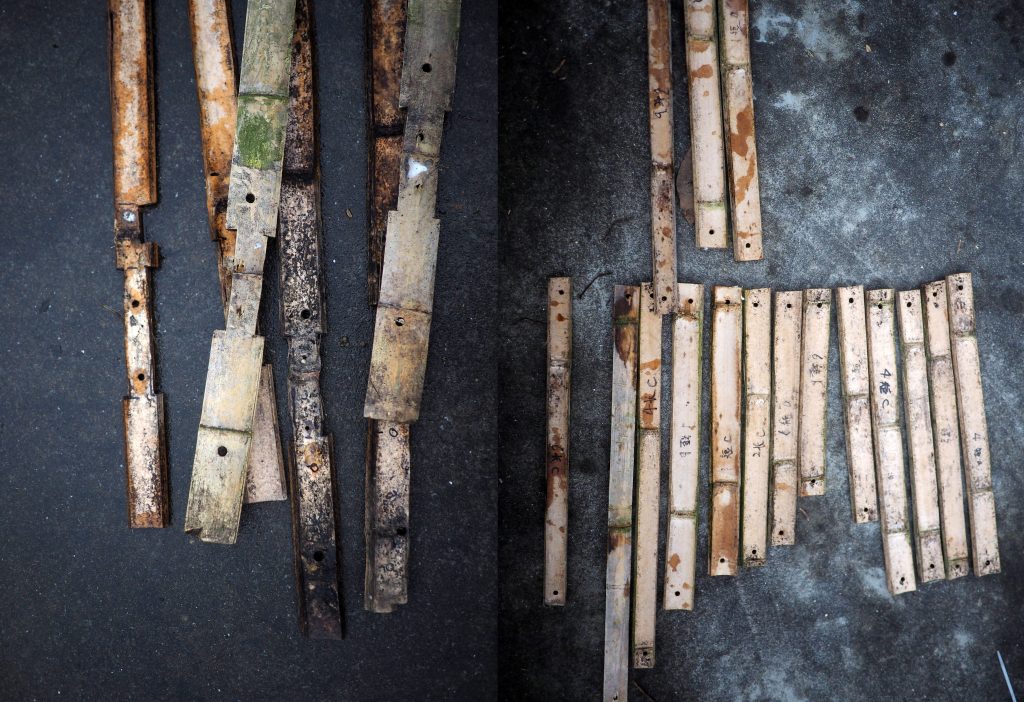
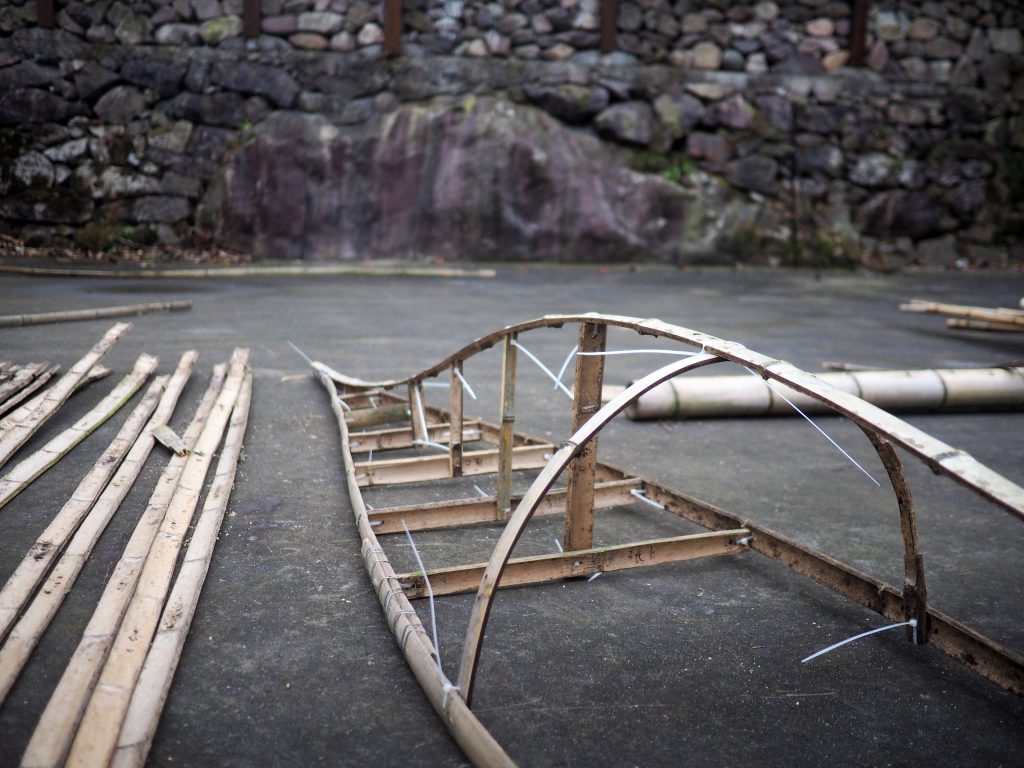
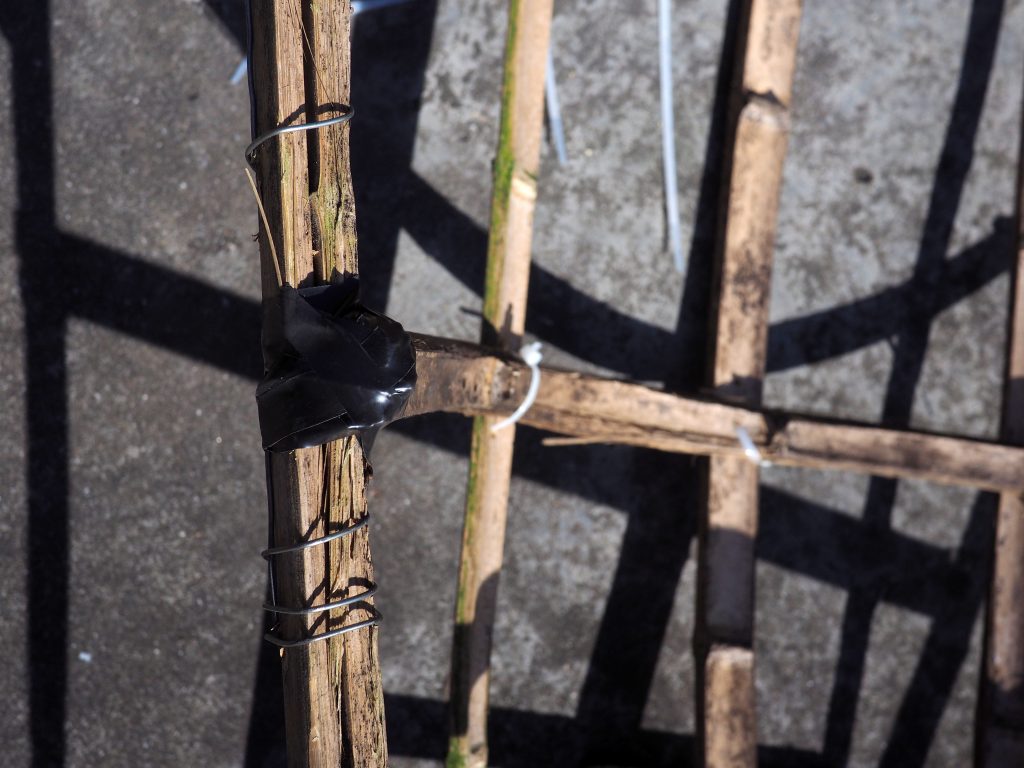
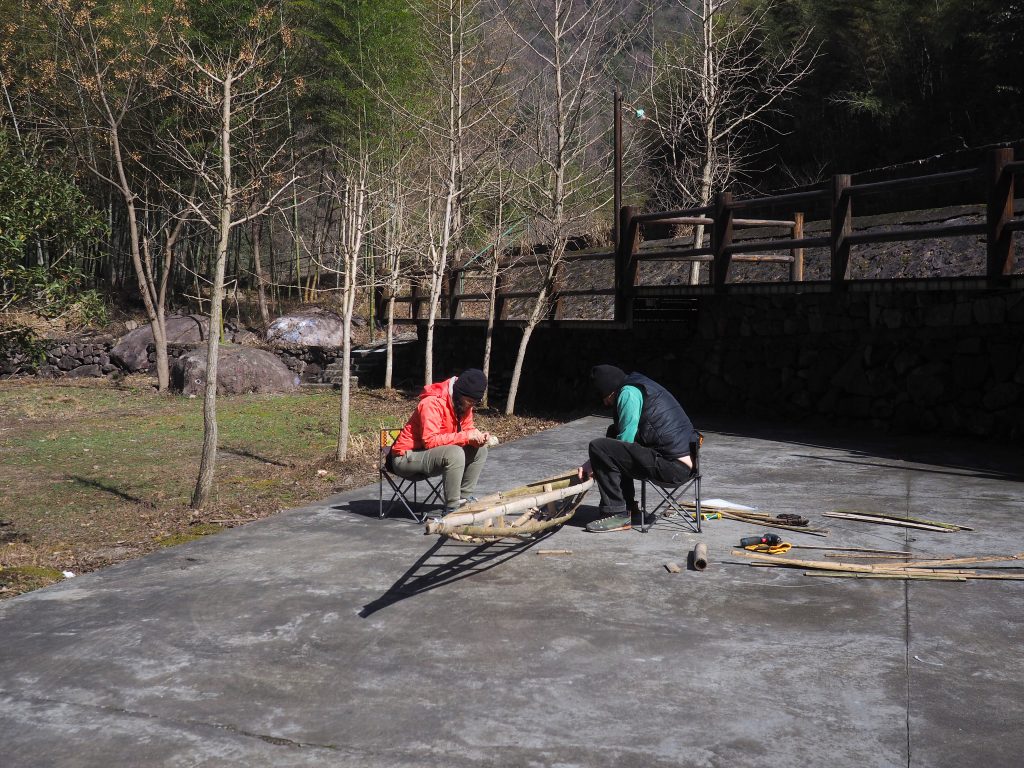
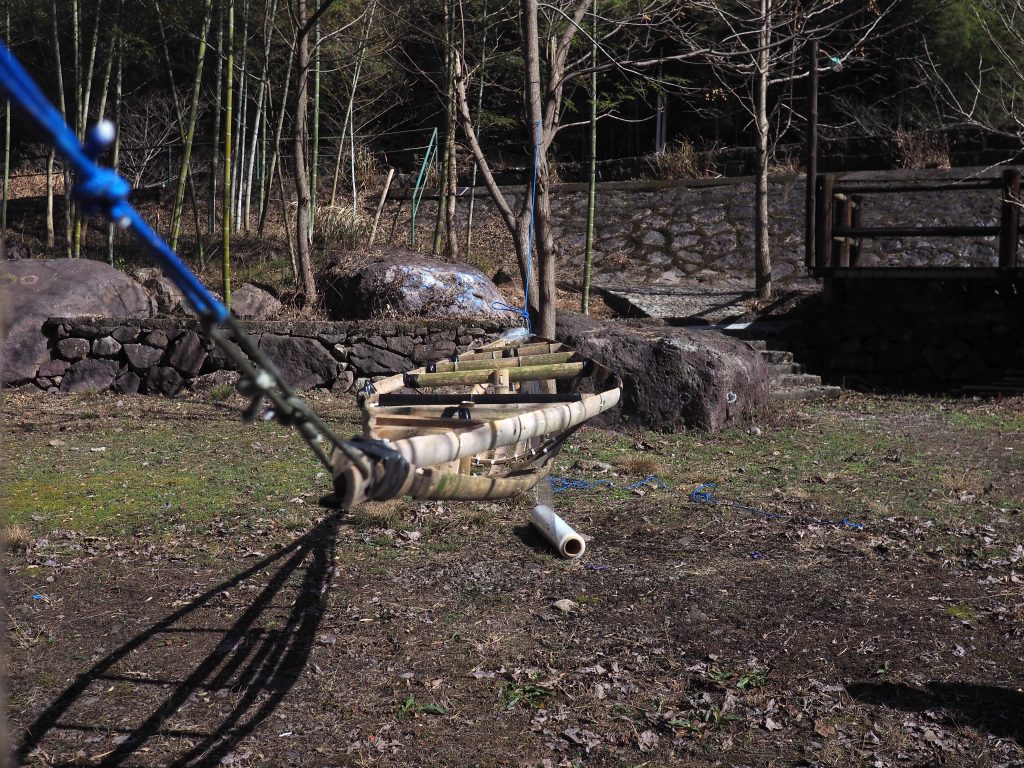
The skin, again for expedience, was cling film (aka Saran wrap). This is cheap, lightweight, and self-amalgamating to a degree so all we had to do was wrap the whole thing a few times, then cut a hole in the deck to get into the kayak. It was a quick and relatively easy process. We hung the frame between two trees and just span the whole frame to wrap it. We’d estimate the total amount of plastic in this build to be in the order of 100 grams or so, so it’s not ideal but not too extreme.
Video: wrapping the skin
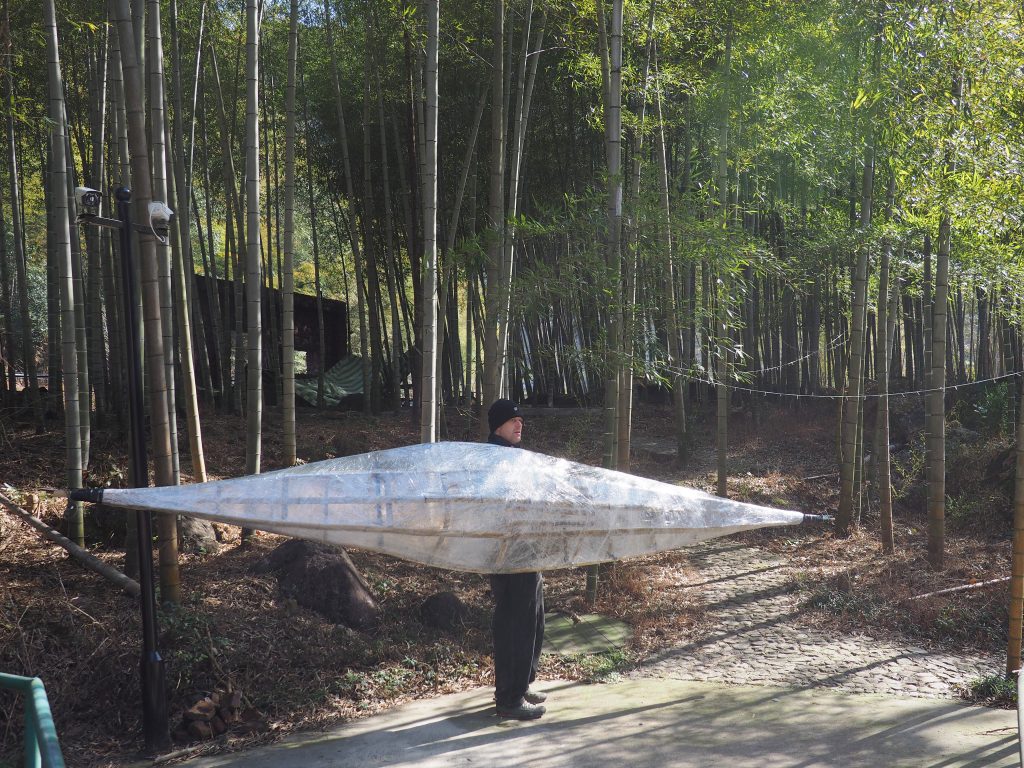
FUTURE DEVELOPMENTS
A more sustainable build would be to use the joining methods outlined above and a natural covering- our version 2 will be skinned with hemp cloth, which is of course not even slightly waterproof, impregnated with epoxy for waterproofing. The native Americans would use birch bark, which we don’t have access to, and the Inuit would use animal skins (which we’re not convinced of the sustainability of in our context, since we have different constraints).
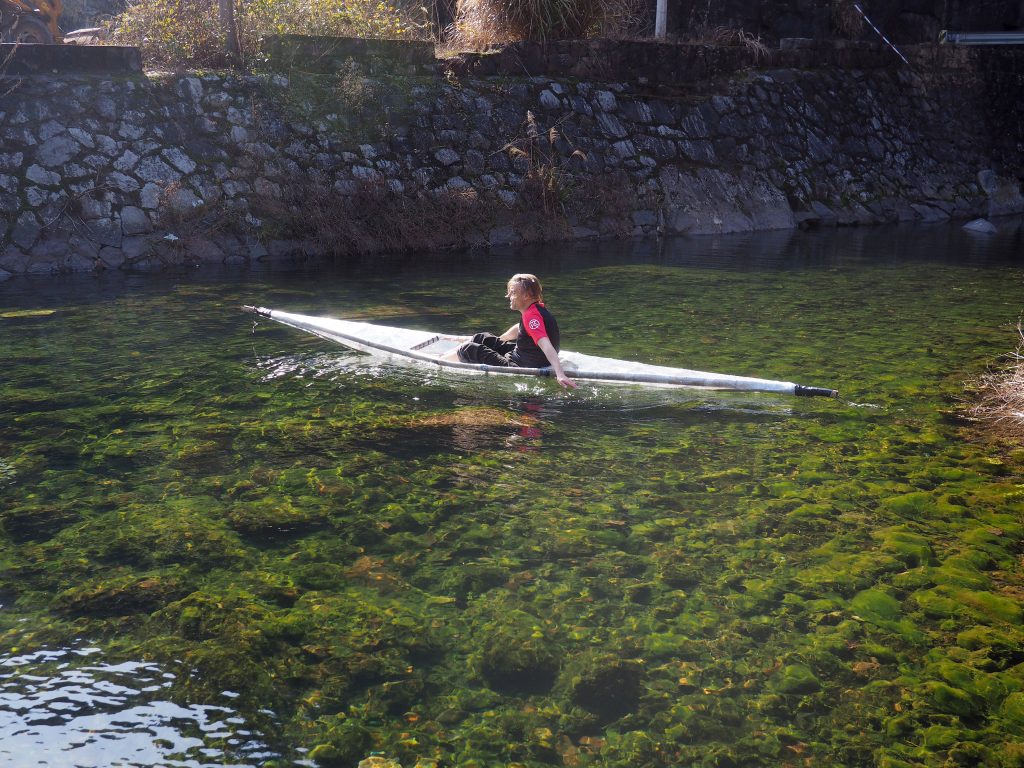
We’re not kayak specialists by any means, and we’ve never made one before, so naturally enough- mistakes were made and lessons were learned. With Matt’s 86kg+ (ahem!) weight, the freeboard was too low, about 40-50mm (this is the height from the waterline to the top of the deck, where water could slosh in). The next one will be taller and more voluminous. However, it was stable, tracked straight (despite the deck being a bit warped), and light to paddle.
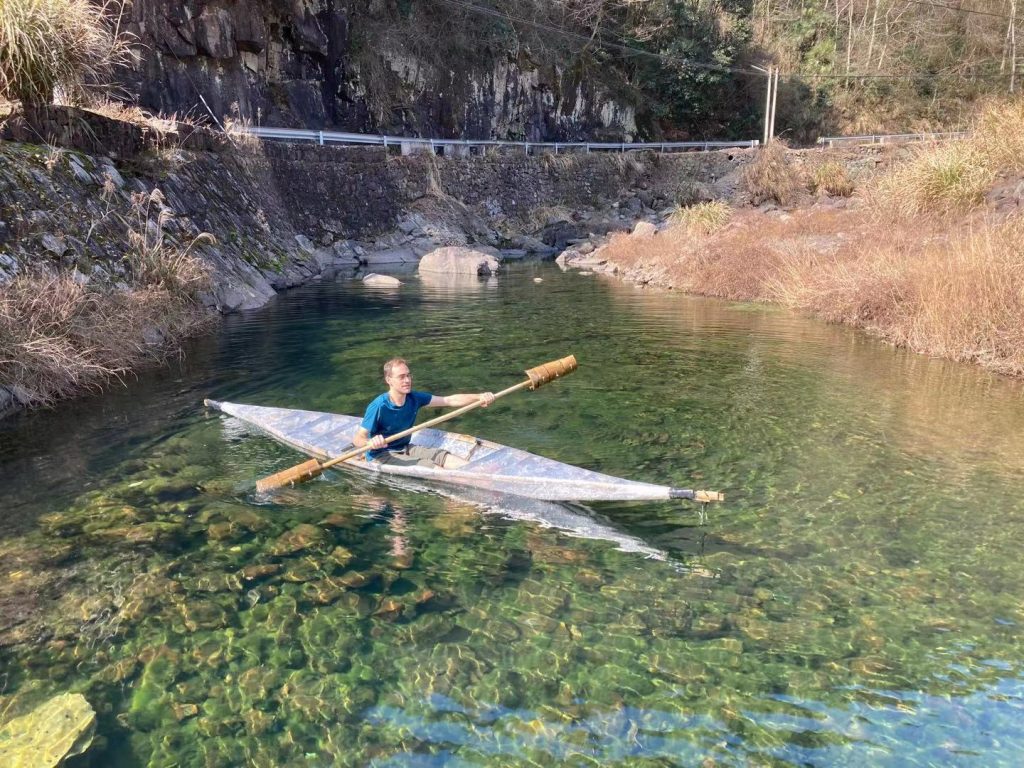
Video: Milly had a try. Video courtesy of Ben
Big thanks to Cai-cai, Lucky and the Persimmon team whom always welcome and facilitate our crazy ideas. Persimmon in Danshan Chishui is our second home in China. We cycle/hike/camp often around this area, it is 60km away from the University of Nottingham Ningbo China where our China home is. Easily accessible on our bikes.
ABOUT KALA
KALA was founded by Mia and Elza Tedjosaputro, in May 2020. KALA provides high quality stylish home decor and accessories that highlight a few simple attainable changes towards an eco-friendly lifestyle. There is always an Indonesian touch ensuring we empower our craftsmen and promote Indonesian culture and craftsmanship. KALA’s specific design language is the use of natural materials and artisanal, with a sense of play of texture and product functionality. We are based in Indonesia and China.
